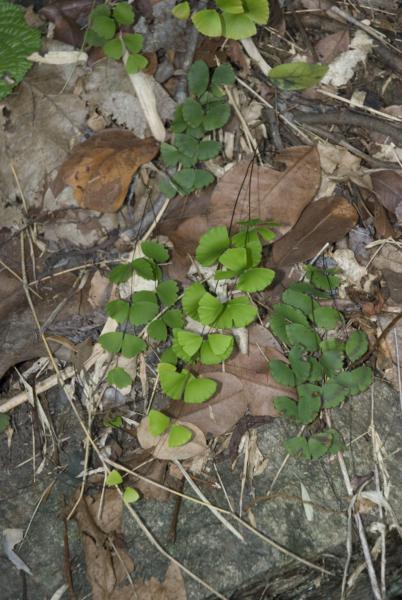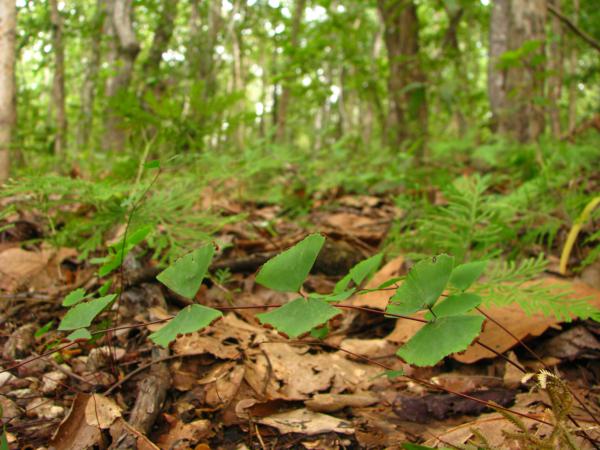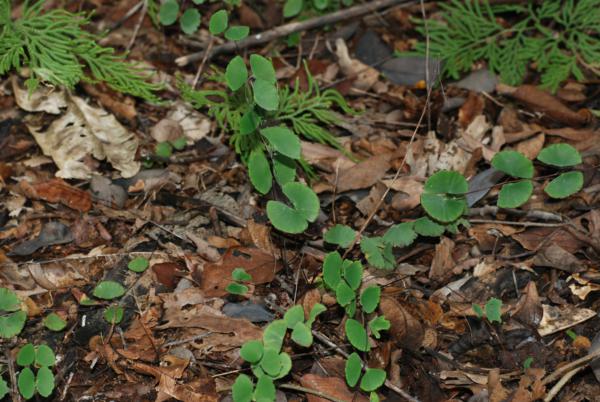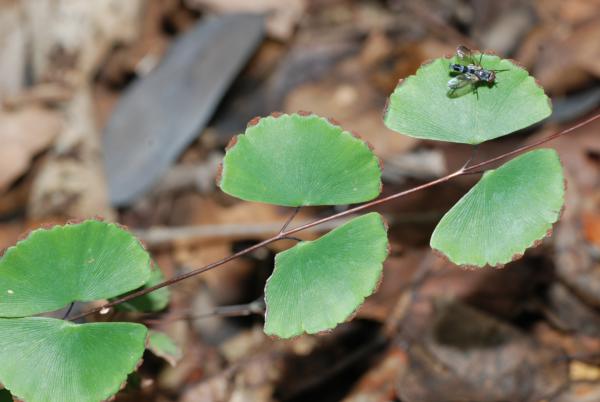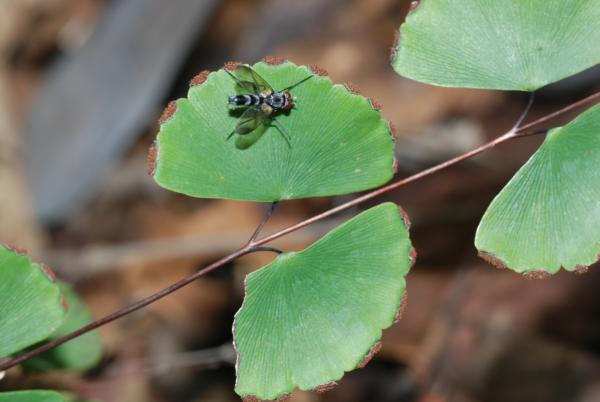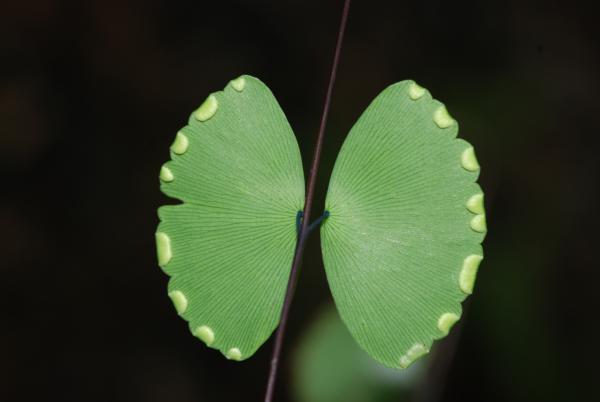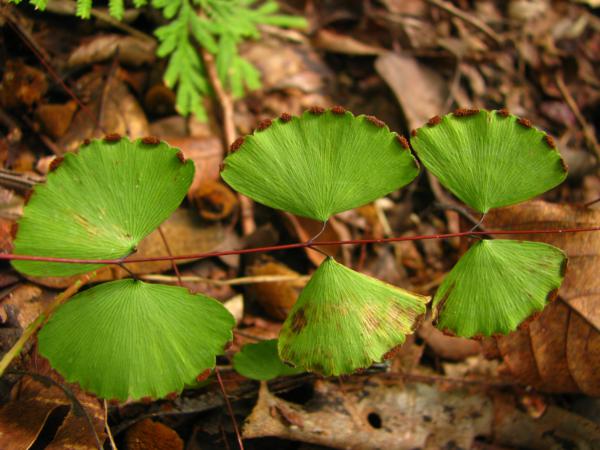
Adiantum erylliae C.Chr. & Tardieu
Etymology
According to Holttum (1954), the botanical name, Adiantum (unwetted) refers to the way in which water-drops run off the surface of the pinnae without wetting them.
Family
Pteridaceae, subfamily Vittarioideae
Nomenclature
Adiantum erylliae C.Chr. & Tardieu, Not. Syst. 6; 172, f. 1 & 2. 1938; Tardieu & C.Chr., Fl. Indo-Chine 7(2): 184. 1940; Tagawa & K.Iwats., SouthE. Asian Stud. 5: 110. 1967; Tagawa & K.Iwats., Fl. Thailand 3: 213, f. 16.1. 1985; Boonkerd & Pollawatn, Pterid. Thailand: 117. 2000. – Type: E. Smith 2322,Thailand, Tak, Raheng (P).
Description
Terrestrial or lithophytic. Rhizome short, erect, rather densely covered with scales; scales linear, 3–4 mm long, c.3 mm wide, indistinctly bicoloured with black centre somewhat paler brown margin, margin entire or with very occasional tooth. Stipes shiny, brown to nearly black, 2–20 cm long, glabrous except for scaly basal portion, scales like those on rhizome but concolorous dark brown. Laminae simply pinnate, 4–6 pairs of pinnae, lanceolate to linear-lanceolate, gradually narrowing upwards, 10–16 by 2.5–4 cm; rachis glabrous, often greatly prolonged and rooting at tip; lateral pinnae distinctly stalked, stalks 1.5–4 mm long; leaflets flabellate, 0.6–1.6(–2) by 0.6–2.7 cm, basal two edges entire, more or less straight to slightly curved outwards, base cuneate to obtuse, distal margin round, subentire or with shallow sinuses, middle sinus sometimes deeper to about half length of pinna, lamina thin, glabrous; veins repeatedly forking. Sori more or less semicircular to oblong, up to ten per pinna; false indusia 1–3 mm wide.
Distribution in Thailand
NORTHERN: Chiang Mai, Lampang, Tak; NORTH-EASTERN: Phetchabun, Khon Kaen; EASTERN: Chiayaphum; SOUTH-WESTERN: Kanchanaburi; PENINSULAR: Surat Thani, Phangnga, Krabi.
Distribution in Laos
Champasak.
Wider Distribution
Vietnam and Cambodia.
Ecology
On dry slopes or in crevices of limestone caves in light shade at low altitudes.
Similar species
Adiantum capillus-junonis Rupr.
Proposed IUCN Conservation Assessment
Least Concern (LC). This species is widespread but the limestone habitat on which it occurs is often exploited so its status should be reviewed.
Voucher specimens - Thailand
Middleton et al. 4517 & 4877, Chiang Mai, Doi Inthanon National Park (E); Nanakorn et al. 1684, Phetchabun, Nam Nao (QBG); Norsaengsri & Lakoet 3901, Khon Kaen, Phu Pha Man (QBG); Norsaengsri 3789, Chaiyaphum, Nong Bua Daeng (QBG).
Voucher specimens - Laos
Newman et al. 1991, Champasak (E); Thorel s.n., Champasak, Kong (P).
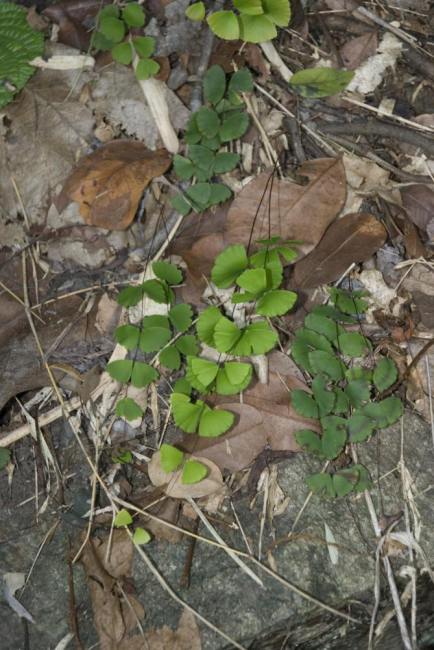
Habit
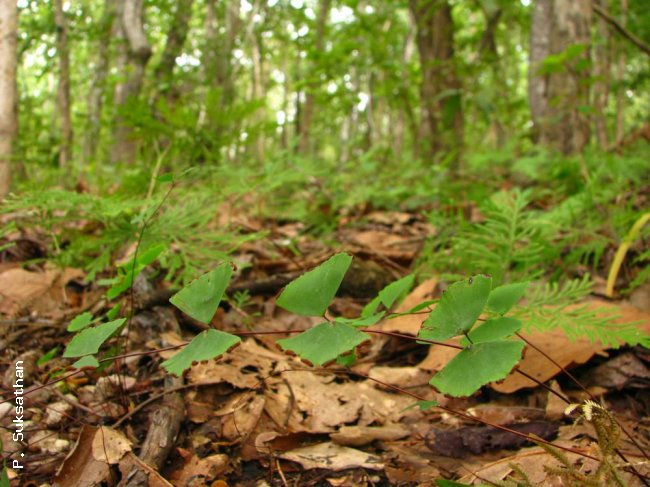
Habit
Habit
Pinnae
Pinnae
Pinnae and young sori

Pinnae and old sori
Site hosted by the Royal Botanic Garden Edinburgh. Content managed by Stuart Lindsay, Gardens by the Bay, Singapore and David Middleton, Singapore Botanic Gardens. Last updated 24 January 2012
